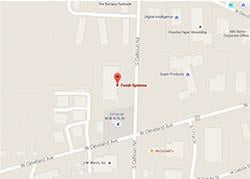There are several factors that determine which air spray technology best suites your needs: volume of coatings sprayed, local & state regulations, the coating’s sprayability, and the class of finish.
The term compliant air spray technology means a gun uses reduced air atomizing pressure (say 30 psi) to atomize a coating that years ago required + 50 psi. A compliant gun needs to provide 65% coating transfer efficiency with a decrease in over spray.*
Volume of Coatings
If you are the hobbyist restoring a vehicle, or making furniture for your granddaughter, you are not going to puncture a hole in the atmosphere with your coatings’ usage. Therefore, use whatever air spray technology you prefer including your Dad’s BINKS Model 7 gun.
State & Local Regulations
Finishing departments with intermittent or full time spraying operations will fall under local & state regulations. These regulations will more than likely define HVLP as the preferred air spray technology. The complaint air spray may or may not be accepted.
Sprayability
Compliant guns with their higher atomizing air pressure at the air cap will always atomize a coating finer than HVLP. As an example, compliant air spray will atomize water-based and industrial coatings easier than HVLP. However, all automotive basecoats and clear coat systems -- whether solvent or water-base -- are designed with HVLP in mind, and they will provide a Class A finish with an HVLP gun.
Class of Finish
A new vehicle’s finish is classified as a Class A finish. Depending on a coating’s sprayability, a HVLP gun can sometimes fall short of a Class A finish. However, a compliant gun is more likely to provide a consistent Class A finish over a broader range of coatings with an increase in over spray.
Bottom Line
If you are not regulated to use HVLP, and do not mind some extra overspray, the compliant air spray technology is a better overall choice.
*Other spray gun terms that also mean compliant air spray are RP (reduced pressure) and HTE (high transfer efficiency).
Handle: news/i-m-confused-do-i-use-hvlp-or-compliant-air-spray-technology

